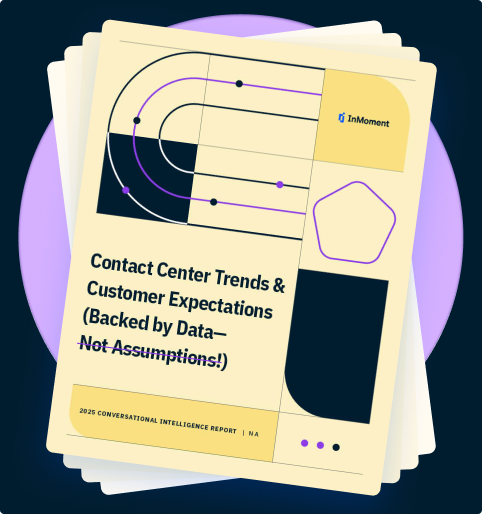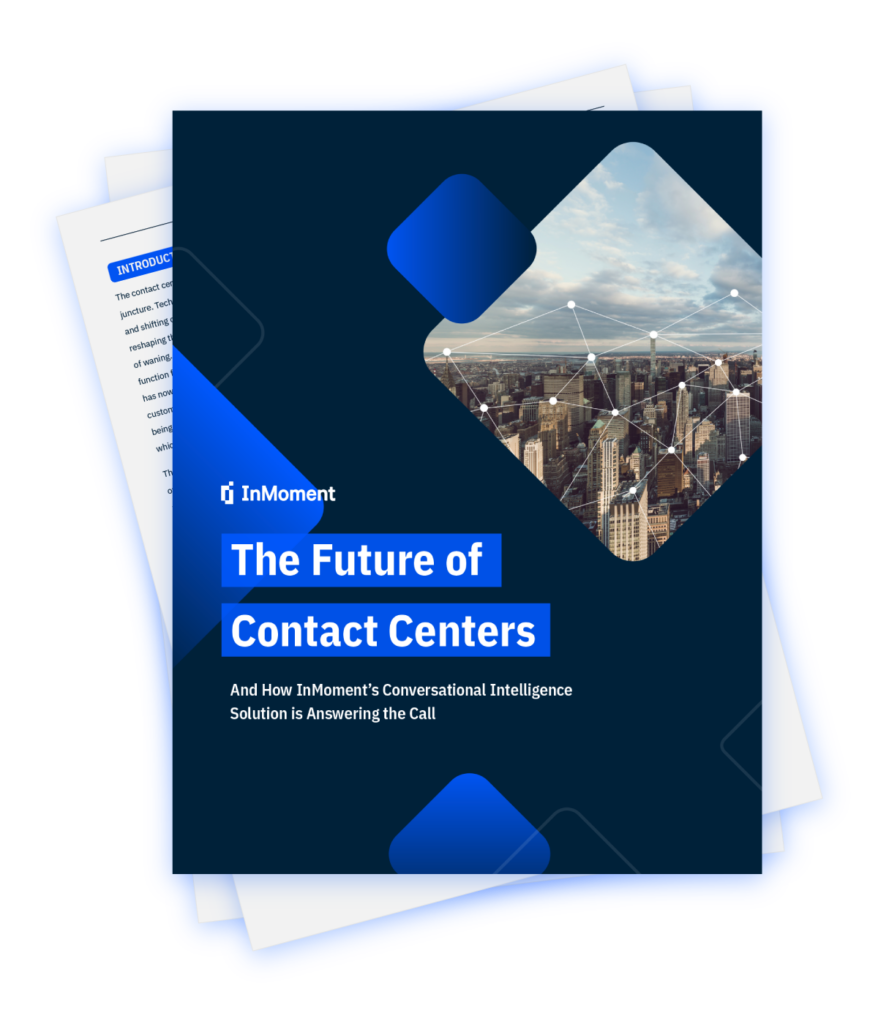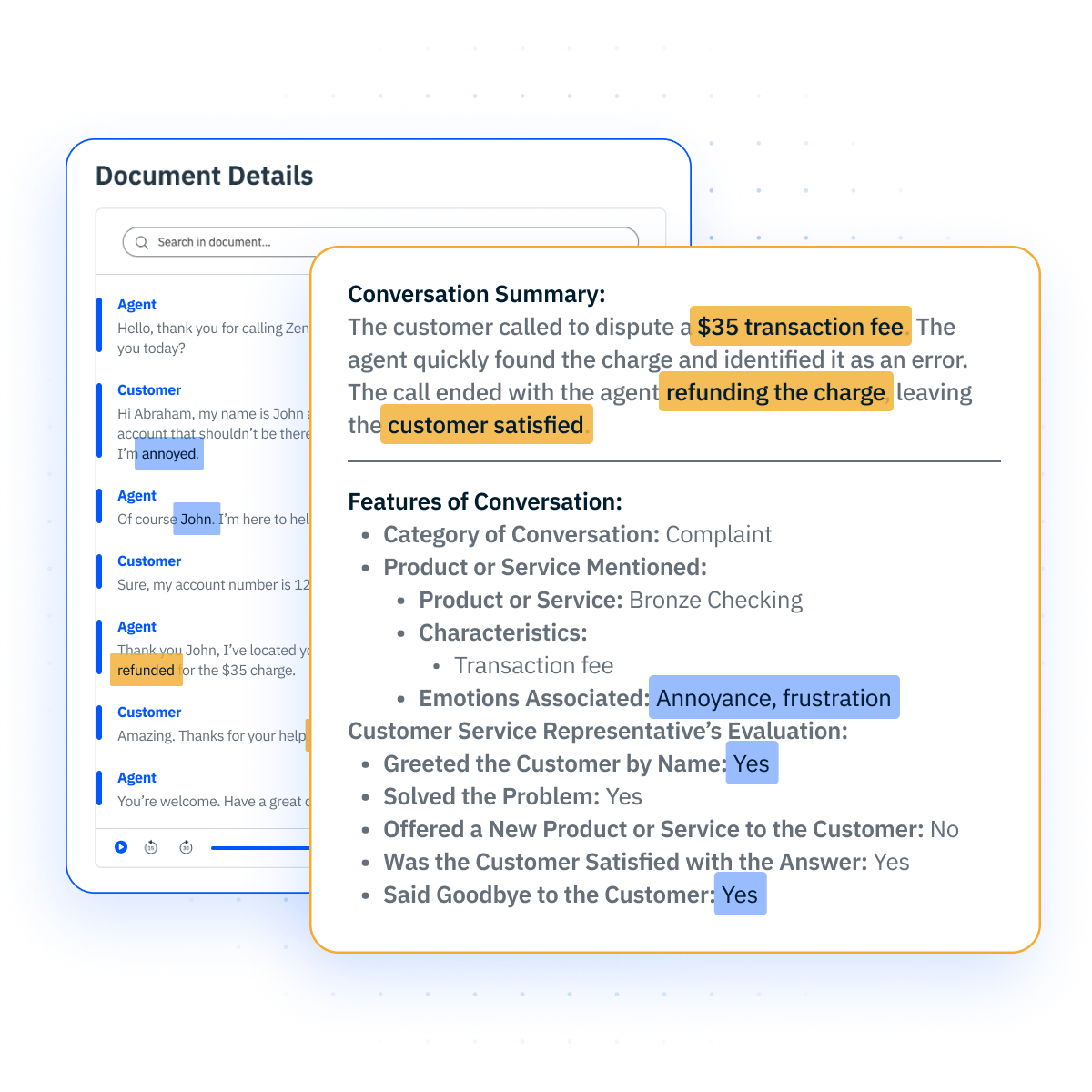Refining Your ICP With Conversational Intelligence: A Data-Driven Approach
Refine your ICP with conversational intelligence. Learn how AI-driven insights help you target the right customers and improve marketing precision.
Marketing your B2B product without first defining your ideal customer profile (ICP) is like shooting in the dark—you may have all the tools you need to hit your target, but that won’t help much when you have no idea where it is.
An ICP is a detailed description of the best-fit customer from your target audience. It defines attributes like industry, company, and pain points, making it easier to determine which businesses in your target market would make the best customers. However, creating an accurate ICP is no easy feat, especially if you rely on old-school methods or broad assumptions.
For a reliable profile, you need modern solutions that go beyond standard firmographics. Enter conversational intelligence (CI)—AI-driven technology that analyzes customer interactions.
Let’s look at how CI can help you refine your ICP.
What Role Does Conversational Intelligence Play in Refining an ICP?
Conversational intelligence involves using machine learning (ML), artificial intelligence (AI), and natural language processing (NLP) to analyze human conversations.
It pulls data from touchpoints like social media, chatbots, emails, customer feedback, customer relationship management (CRM) tools, and interactions with customer support, marketing, and sales teams, providing insights into customer intent, sentiment, pain points, and patterns.
Through these insights, you can create highly accurate customer profiles and focus your resources and marketing efforts on the right leads. This is more important than ever since marketing budgets have been on a decline since 2022—you want to make the most of what you have.
Key Insights from Conversational Intelligence to Refine an ICP
Conversational analytics provide “cheat codes” for building an accurate ICP by unlocking insights beyond obvious firmographics like your customers’ industries. They uncover sentiment, engagement, buying intent, and competitor mentions, giving you a well-rounded view of which target customers are likely to convert.
1. Identifying Pain Points and Buying Intent
Conversational intelligence uncovers recurring challenges in customer conversations, which can help you determine what your target market struggles with most. It can look for phrases that highlight an unmet need, like “we’re frustrated with” or “we can’t figure out how to.”
This technology also picks up subtle buying intent signals in text or audio conversations. For example, it can point to highly engaged customers—those actively asking questions about your product in conversations—to help you create an ICP that includes their attributes.
2. Analyzing Sentiment and Engagement Patterns
Conversational intelligence provides conversation breakdowns that can help you segment customers based on how they feel about your brand—positive, neutral, or negative.
It highlights customers who use positive language when interacting with your brand, like “This may be just what we need,” helping you focus on the most engaged prospects when creating your ICP.
3. Extracting Key Demographic and Firmographic Data
CI uses real-world conversation data to spotlight high-converting market segments. If startups use the most positive language and tone, it can point you toward this group, allowing you to refine your ICP to include their specific industry, company age, and company size data.
CI can also highlight demographic info disclosed in conversations, such as team size, the job titles of key decision-makers, and customer locations. This can help you work on your buyer persona and allow for well-informed location-based campaigns.
4. Tracking Competitor Mentions and Market Positioning
Conversational intelligence goes beyond basic firmographic data to analyze how potential customers compare your business to competitor brands.
It tracks competitor mentions in conversations, highlighting which brands potential customers talk about the most, as well as the specific features or offerings they value or, conversely, don’t like. This helps you determine how you stack up against the competition and uncovers who your perfect customers are.
For example, if companies looking for a particular SaaS solution frequently mention a competitor because it provides specific integrations that your solution doesn’t, you can refine your ICP to focus on businesses that don’t need those integrations.
5. Optimizing Lead Scoring and Qualification
CI uses qualitative insights from conversations to help teams refine ICP criteria and prioritize high-value leads. It detects signals that point to high interest levels and urgency, such as questions about pricing or phrases like “We need to go to market in the next X months,” pointing to the customer segments that should be on your high-priority list.
CI also refines lead scoring and qualification by tracking potential customers’ levels of engagement. It highlights those who engage frequently with your team, which can help you refine your ICP to focus on ready-to-buy target accounts.
6. Uncovering Emerging Trends and Evolving Needs
Customer needs and preferences aren’t static—your ICP shouldn’t be either.
CI can help you create a dynamic customer profile by detecting shifts in customer behavior, expectations, and industry trends. For example, based on customers’ conversations with your sales team, it can offer insight into new pain points you can solve, helping you expand your current profile.
How to Leverage Conversational Intelligence to Refine Your ICP
Now that you know the value of CI in profile refinement, how do you leverage it to refine your ICP and fuel your marketing strategies? We’ll show you with this step-by-step guide.
Step 1: Choose a CI Tool and Collect Conversational Data from Various Sources
Your choice of CI tool will impact the value of your data and the accuracy of your ICP. So don’t just pick the first tool you come across. Take time to assess each option, prioritizing features like:
- Transcription capabilities to convert audio recordings to text for seamless AI analytics.
- Conversation summaries to glean key takeaways from potential customers’ interactions with your brand, saving your sales and marketing teams time
- Advanced text analytics to find common themes, pain points, and patterns to streamline the development process
- Real-time insights from analyzing conversations as they occur, ensuring your teams always have access to the latest information
Once you find a tool that ticks all your boxes, collect conversational data from multiple touchpoints, including chatbots, messaging tools, customer interviews, sales calls, and surveys. This gives you a comprehensive understanding of customer needs and behaviors, which can help you develop a basic ICP.
Step 2: Analyze Conversations for Patterns, Keywords, and Sentiment
Once you’ve collected data and formed a basic ICP, use your CI tool to further analyze conversations for recurring patterns, sentiment, trends, and frequently mentioned keywords. This can reveal customer interests, concerns, and intent, helping you refine your ICP based on what potential customers are actually looking for.
Step 3: Identify Key Themes to Distinguish High-Value Customers
Narrow your ICP further by leaning on your CI tool to identify characteristics that define the most engaged and profitable customers. Look for commonalities (such as common pain points, product preferences, and buying motivations) in conversations, and then segment customers based on your findings. This differentiates high-intent customers from the rest, making it easier to identify their attributes.
Step 4: Refine ICP Criteria Using Conversational Insights
Once you’ve segmented high-value targets from the broader market, look for common characteristics to understand what makes them your best customers. Are they in the same industry? Do they have similar needs? Do they share the same customer base? Do they have a comparable decision-making process?
If you find common ground, feed the characteristics into your ICP to get a refined demographic, firmographic, and behavioral view of your ideal customer.
Step 5: Continuously Update ICP with Ongoing CI Insights
You probably don’t have the same needs you did a couple of years ago, and your customers are the same—their needs and expectations will evolve with time.
Prepare your business for these changes by regularly using conversational intelligence data to understand shifting market trends, customer expectations, and business growth strategies. Then revisit and refine your ICP based on the findings to make sure your marketing campaigns and sales strategies stay relevant.
Transform Customer Data into Meaningful Insights with Pearl-Plaza
If you’re targeting businesses that fit your current ICP—but your conversion metrics say otherwise—maybe it’s time to reevaluate who your perfect customer actually is. This time, invite conversational intelligence software to the party. It can help fine-tune your ICP by pointing to high-intent customers based on conversations with your brand.
Pearl-Plaza simplifies ICP development by pulling data from every customer touchpoint and uncovering common themes and patterns.
Our platform goes beyond analyzing conversations to provide a fully integrated customer experience (CX) system that can pull signals from every medium, including CRM tools, to refine your ICP—so you can sell to those who are ready to buy.
Schedule a demo with Pearl-Plaza today to learn how our platform can help you create a well-defined ICP that boosts your conversion rates!




